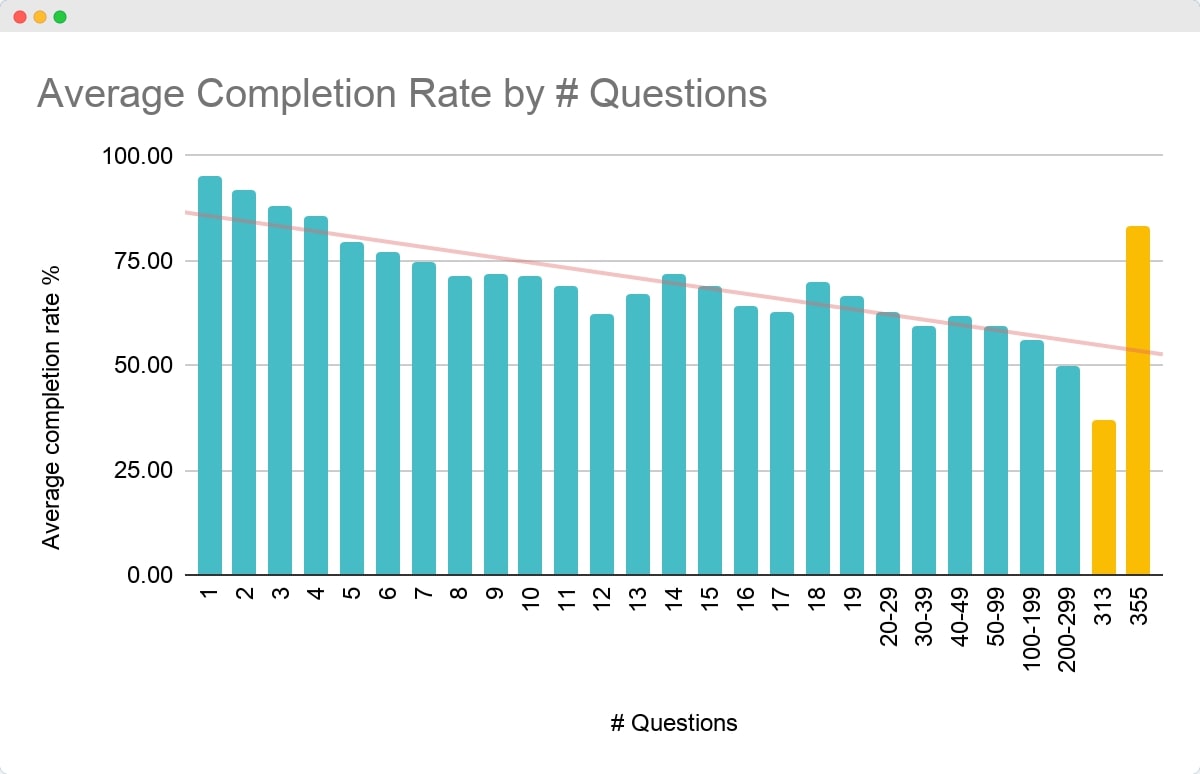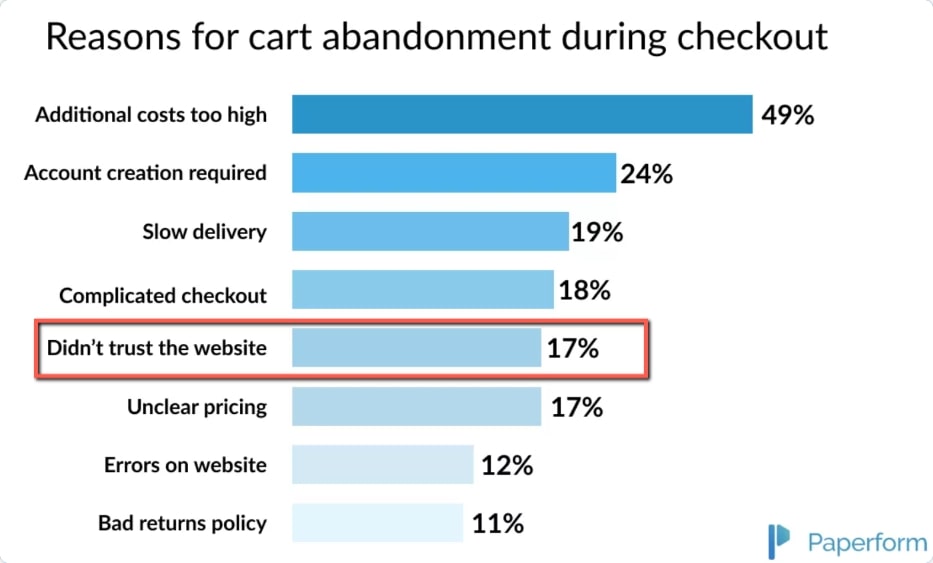Are you looking for a helpful guide on how to increase ecommerce conversions? You’ve landed on the right page. But before we dive in, let’s quickly cover the basics.
What is Ecommerce Conversion Rate?
Ecommerce conversion rate is a metric that is calculated by dividing the total number of site visitors by the number of conversions. Because it’s a key metric for your store’s success, it pays to invest as much time and resources as possible into its optimization.
How To Measure Ecommerce Conversion Rate
You need two values to get your website’s conversion rate — the number of conversions and the total number of visitors. You can get both values from Google Analytics.
Here’s a simple formula for determining your website’s conversion rate:
Conversion Rate = (# Of Conversions ÷ Total # Of Visitors) x 100
For example, the number of conversions is 10 and the total number of visitors is 100, this will be the equation:
conversion rate = (10 ÷ 100) x 100
conversion rate = (0.1) x 100
conversion rate = 10
What Is A Good Ecommerce Conversion Rate?
You might be wondering: what is a good average conversion rate for an ecommerce store? The short answer is that it depends on your market.
Omniconvert recently ran a study to determine the average conversion rates for the most popular ecommerce niches, and here’s what they found:
- Arts and Crafts: 3.84% – 4.01%
- Electrical and Commercial Equipment: 2.49% – 2.70%
- Pet Care: 2.51% – 2.53%
- Health and Wellbeing: 1.87% – 2.02%
- Kitchen and Home Appliances: 1.61% – 1.72%
- Home Accessories and Giftware: 1.46% – 1.55%
- Cars and Motorcycling: 1.35% – 1.36%
- Fashion, Clothing, and Accessories: 1.01% – 1.41%
- Sports and Recreation: 1.18%
- Food and Drink: 0.90% – 1.00%
- Baby and Child: 0.71% – 0.87%
- Agriculture: 0.62% – 1.41%
But while it’s fine to settle with a good conversion rate by this definition, it’s a sweeter deal to go beyond the average. This grants you the opportunity to outperform your competition and generate higher income.
For example, if the average conversion rate in your industry is between 0.90% to 1.00%, it’s best to aim for a higher figure — 2.50% (or above).
5 Factors That Influence Ecommerce Conversions
To help you achieve a conversion rate that’s better than the average, take note of the factors that can affect the increase in conversions.
1. Product-Audience Fit
The product-audience fit refers to market demand (or lack thereof) for your product. And achieving product-audience fit is among the pillars of a successful business.
If you achieve product-audience fit, it means the market is on your side. There’s demand for your product, and you know how to reach the right type of customers searching for it.
Here are tips on how you can achieve a product-audience fit:
- Define (and focus on) your target customer - Determine who’ll buy your product and identify their needs. Use qualitative (interviews) and quantitative (surveys) methods to create detailed personas of your customers. Be sure to serve them, and do your best to fulfill their expectations.
- Set your value proposition - Based on your target customers’ needs, create a better product than your competitors are offering. You can accomplish this in a number of ways. For example, your product could have more features, be more intuitive, prettier, or simply cheaper than competitors’. A mix of all these factors constitutes your unique selling proposition.
- Specify your MVP (Minimum Viable Product) feature set - Include the best and most important features for your product on your first rollout. Be sure to keep the overall product functional and simple.
- Create your MVP prototype - Present it to your target customers to assess their responses. Depending on their feedback, adjust your prototype as necessary.
2. Order And Payment Forms Design
Your order and payment forms’ design is also one of the reasons a customer might decide whether or not they want to pursue buying your product. If your form makes the order and payment processes difficult for them, a potential customer is likely to leave your website before completing a purchase.
Here are the elements in a form that make things difficult for online shoppers:
- Slow speed and performance - Most people get discouraged if filling out a form takes a long time, and they decide not to continue as a result. Remove any extra elements you don’t need to process an order.
- Absence of automation - Whenever possible, enable automation to minimize the effort of filling out your form. This includes auto-fill, auto-detect, and auto-capitalize features on your forms.
- Long forms with no progress bars - Filling out long forms can be tedious. If possible, cut them short. Otherwise, be sure to add progress bars.
- Vague CTA (Call-to-Action) - Potential customers may reconsider placing an order if the CTA button is problematic. To resolve this issue, design an easily readable, screen-wide CTA button.

If your order and payment forms aren’t optimized for mobile, you have another problem to fix.
According to different studies, the conversion rates on non-responsive forms dip quite significantly. Considering that a big segment of shoppers prefers to use their mobile phones to make purchases, the responsiveness of your forms could make or break your business.
Here are more tips for designing order and payment forms:
- Provide clear instructions - Inform your audience what the form is for and what you expect them to do with it. Be transparent as much as possible.
- Choose words wisely - Conduct keyword research and use positive words. Adopt a friendly and encouraging tone. Also, whenever you deem it appropriate, express gratitude.
- Be mindful of appearance - Create forms that aren’t just functional, but also beautiful. Start by choosing natural colors and fonts that match your brand and industry.
- Include essential input fields - Eliminate input fields that can cause delays. A customer’s name, billing, and shipping information may be all that’s necessary.
3. Supported Payment Methods
Payment gateways are merchant services that process payments for ecommerce stores. They’re a vital part of your website because, without them, your customers can’t send you payments.
This is also why it’s important to choose a trustworthy payment gateway that your customers would find easy to use.
The most popular high-quality payment gateways are:
- PayPal
- Venmo
- Stripe
- Square
- Samsung Pay
- Alipay
- Apple Pay
- Amazon Pay
A concern is, that there could still be security vulnerabilities involved even if you choose high-quality payment gateways. Malware issues, data breaches, and incidents of fraudulent hacking are possibilities — and they’re out of your control. The solution? Be aware of them and seek protection in advance.
Here are the best practices for choosing supported payment gateways:
- Choose gateways that many people use - For example, choose PayPal — one of the most popular payment gateways out there. According to Statista, there are 426 million PayPal accounts as of Q4 2021.
- Accommodate international shoppers - Focus on the payment gateways available to your target audience. If most of your potential customers are in Asia, choose a popular and available payment gateway for that region.
- Always provide transparency - Feature all the available payment gateways on your website. And be sure to disclose all the fees involved for every transaction.
Giving customers alternative payment options can also influence conversions. That’s because even if some payment gateways are more popular and commonly used, there are customers who’d find it more convenient to transfer money using other methods.
Here are some alternative payment options:
- Mobile wallets - Mobile wallets allow customers to complete financial transactions using their smartphones. This option is especially popular with millennial buyers.
- Instant financing - It allows customers to send payments (specific amounts) over a set period. Its benefits include granting people to make “heavy” purchases they couldn’t afford otherwise.
- Cryptocurrency payments - Accepting crypto payments allows you to accommodate potential customers with a stash of BTC, ETH, and other cryptocurrencies. This is a great option considering cryptocurrencies’ rise in popularity.
- Loyalty points - This is another increasingly popular payment option. Other than receiving payments, it encourages your potential customers to regularly check out your fresh offers.
4. Trust Badges
Trust badges are visual symbols that you can add to your website that confirm the trustworthiness of your business. For an ecommerce website, gaining the trust of customers is of paramount importance.

As the image below shows, one of the reasons for cart abandonment is the lack of trust that customers have in an ecommerce website. Notably, the bar chart shows that 17% of cart abandonments happen because a customer doesn’t trust the site.

A fair way to look at this situation is to put yourself in your customer’s shoes. If you’re about to buy from a website, wouldn’t you feel secure if it had a trust badge?
Here are facts about using trust badges:
- Area of placement - It’s up to you where you place your trust badges — anywhere on your website is fine. A common practice of many ecommerce websites, though, is placing them on checkout and landing pages.
- Highly important to SMBs (Small and Medium-Sized Businesses) - While ecommerce websites of all sizes can benefit from trust badges, SMBs can get the most out of them. That’s because SMBs aren’t as well-established as large businesses and could use every trust-building effort.
- The “best” type of trust badge - No trust badge is the best or most effective. This subject depends on the kind of ecommerce website you have and your products.
Below are the main types of trust badges.
- Accepted Payments - Concerning the discussion earlier, it’s good practice to feature a badge that shows the payment gateways you accept. It lets customers know if they can use a specific payment gateway.
- Guaranteed Safe Checkout - It indicates that your website’s checkout process is worth trusting. This badge also informs your customers that if they decide to provide credit card details and other sensitive information, the data will be encrypted and in safe hands.
- Free Shipping - Shipping fees can be a lot to shoulder. And a website that offers and promotes free shipping can pique the interest of potential customers.
- Free Returns - This badge helps potential customers feel confident in buying products from you. It lets them know that if they are dissatisfied with a purchased product, they have the option to return it.
- Money-Back Guarantee - This is one of the most effective trust badges. Like the Free Returns badge, it instills confidence in buyers by assuring them they can have their money back if they dislike their purchase.
One concern is that there could still be security vulnerabilities involved even if you choose high-quality payment gateways. Malware issues, data breaches, and incidents of fraudulent hacking are possibilities — and they’re out of your control, even more so when you do not protect your devices from prominent threats.
The solution? Be aware of them and seek protection in advance.
5. Customer Support
Customer support can make or break your business. If your customer support works like a well-oiled machine, you’ll see your website’s conversion rates skyrocket. But if you won’t bother making customers feel like they can rely on you, the rate will go down.
Aside from raising conversions, here are the other reasons customer support is important:
- Higher chances of referrals - If your customers are pleased with how you helped them during their time of need, they’re likely to talk about you. And they’re likely to refer people in their network to your site as well.
- Brings competitive advantage - Your ecommerce site will always win versus the competitors whose customer support is worse or slower.
- Grants opportunity to improve - Your customers go to customer support because they have a problem. This brings your attention to problems and opportunities that you can resolve permanently.
The most effective channels for customer support are phone (VoIP phone system) and live chat. Their main advantage over email is that the conversations are happening in the real-time, solving customer problems as they arise.
Here are more approaches you can take to deliver impressive customer support:
- Personalize your approach - Customers will appreciate it if they’re treated with a personal touch. Call them by their name and address them the way you’re talking to a normal individual.
- Solve problems creatively - Customers contact support because they can’t solve a problem on their own. You need to think out of the box to help them resolve their problems even if it’s not fully straightforward.
- Respond fast - Reduce waiting time. Your customers might want your assistance. But if you make them wait, they’d often spend the waiting time searching for alternatives.
- Promote self-service - Help customers solve their problems by themselves. Lead the way for them to easily see solutions on their own. Self-service is cost-effective and scalable.
Conclusion
Remember that in order to increase your ecommerce conversion rates, you need to focus on optimizing different functions and areas of your business. After all, conversions are just a reflection of how likely the customers are to purchase products through your website.
Persuade them that it’s a good idea, make this process easy and fun, and later delight them post-purchase — and you’ll do just great!
This is a guest post by Vlad Shvets, the growth manager at Paperform.











